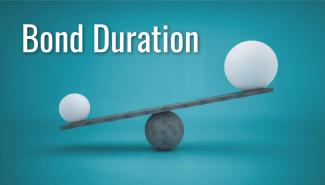
Is Bond Duration Important?
As defined, bond duration “is the sensitivity of a bond’s price to changes in interest rates.” Many investors confuse bond maturity with duration. In fact, maturity is just one duration factor to be considered. Other factors include coupon rate and frequency, bond yield and any call features written into the bond. Like maturity, duration is also expressed in years. The owner of a bond is entitled to a series of cash flows. For coupon bonds, the cash flows start with the payment of the semiannual coupon for each remaining year of the bond’s term. Coincident with the final coupon payment is the return of the face value of the bond. In the case of coupon bonds, duration is always less than maturity. To calculate duration, we determine the present value of the bond’s cash flows and divide that amount by the price of the bond. Considered in this context of cash flows, duration could also be defined “as the length of time before an asset is due to be repaid.” I like to think of bond duration in simpler terms, as when I get my money back.
Thus far, in 2025, the interest rate benchmark 10-year US Treasury (TNX) has moved between 3.88% (April 3 – “Tariff Thursday”) and 4.80% (January 13) and currently sits at 4.30%. Where do rates go from here? Not sure. Minus any fed rate cuts, the inflationary impact of Trump 2.0 – uncertainty from a long list of policy initiatives including tariffs, tougher immigration rules, tax cuts and a higher expected path for federal deficits – should drive inflation higher and provide a call for higher than long-term average interest rates. As interest rates change, the prices of fixed income securities, like bonds, also change. The relationship between changes in rates and prices is an inverse one – interest rates go up; prices of bonds go down. Many investors look to the 1% Rule which suggests that for every movement of 1% in interest rates, bond prices will change (in the opposite direction) in an amount equal to their duration. For example, the price of a bond with a five (5) year duration will fall about 5% if interest rates rise by 1%.
Duration then provides an easy way to compare bonds or evaluate a portfolio of bonds. Bonds with a longer maturity will have higher duration, which in periods of rising interest rates can translate into higher interest rate risk. In general, longer maturities, lower coupon rates and lower yields to maturity lead to longer duration. Managing duration risk is a key to constructing a bond portfolio that balances capital preservation with seeking attractive yields. Low or moderate duration strategies are appropriate during periods of unclear monetary policy pathways or if we expect interest rates to rise. We are currently recommending a “low to ground” approach for bond portfolio duration with a target duration in line with the Bloomberg US Aggregate Bond Index (AGG), which is a widely used proxy for the US investment grade, USD denominated bond market. The duration of the Index is currently 6.01 years, above the long-term average of 4.96 years. This approach suggests a reduction in intermediate and long-term bond holdings, particularly US Treasuries, is the way to go. Over the past two (2) years we have increased our allocations to money market funds and low duration bond funds, a posture will now maintain into 2026.
Let’s see if you are paying attention. With a zero-coupon bond, is duration less than or equal to maturity? The correct answer is that with a zero-coupon bond, duration is equal to maturity as the only cash flow from the bond is the one-time payment of principal and interest upon maturity.

